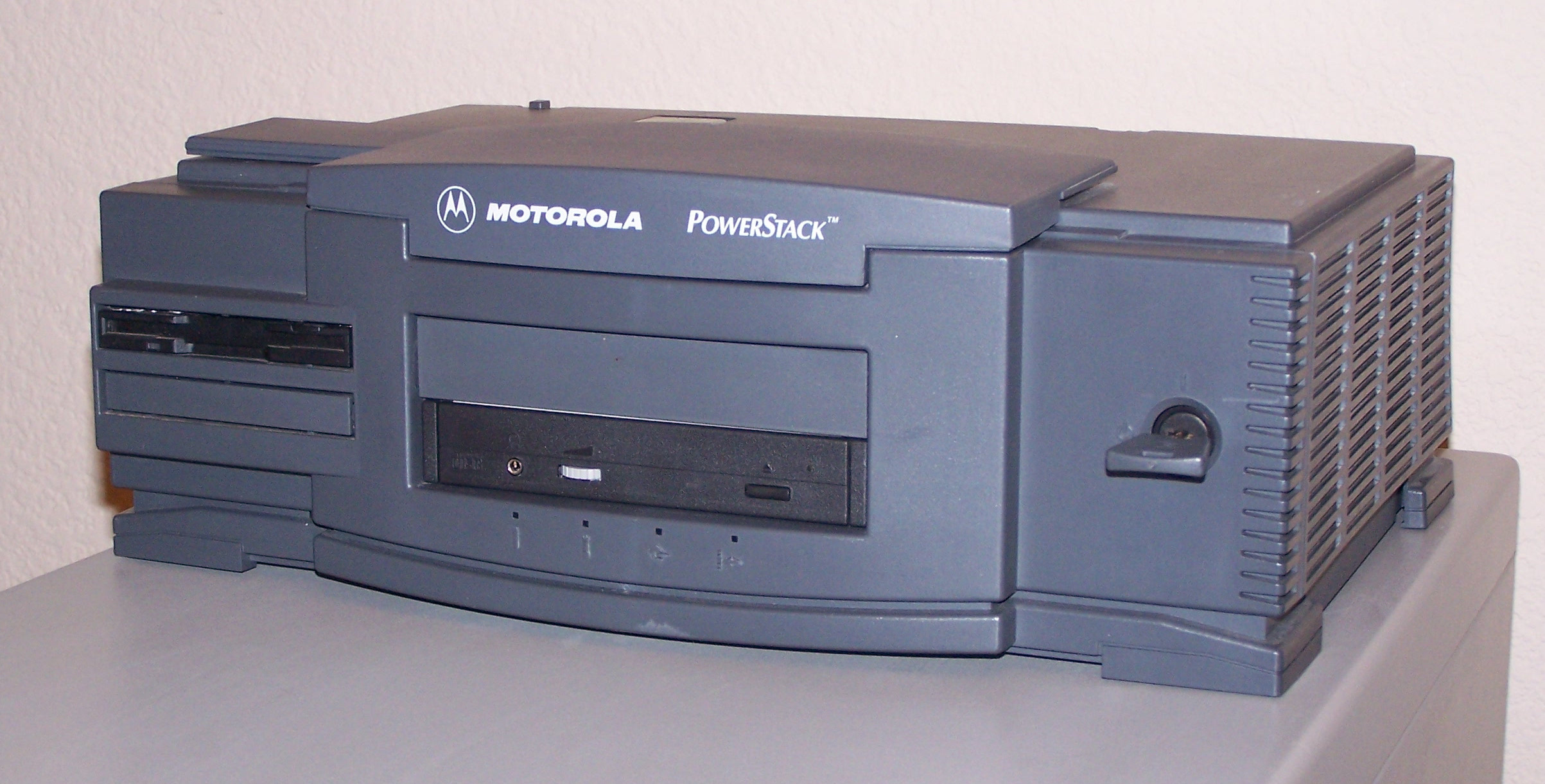Motorola PowerStack
The PowerStack was one of the Motorola Computer Group's entries into the personal computer (PC) market around the time the Microsoft Windows/Intel x86 juggernaut was stumbling with their mass market Windows 3.11 replacement. It's a compact, modular, efficient platform featuring IBM/Motorola's PowerPC CPUs as well as best-in-class contemporary interfaces like PCI and SCSI. A compute element could be stacked with other modular I/O and storage cases to expand its capabilities without having to rehome the computer in a larger chassis.

Unfortunately I only have the one compute chassis and it houses a slow PowerPC 603 processor. The biggest problem with the 603 was that its caches were too small to keep the CPU pipelines full. The 603e replacement was a considerably faster design.
PowerStacks also proved to be quite expensive, utilizing a number of more expensive laptop parts to keep it small, ECC RAM, and high-end buses like SCSI instead of the less efficient, budget-minded IDE interface popular on home computers.
I fully populated the RAM slots with the largest SIMMs I could find for it. The original fans on the PSU were extremely noisy. I managed to replace them with much quieter 80mm case fans. Cooling the 67 MHz PowerPC 603 wasn't an issue as it ran vastly cooler than contemporary Intel products — it needed neither fan nor heatsink. Installing Linux via the PowerPC Reference Platform (PReP) firmware was a snap thanks to community support for the PReP platform. I never connected a monitor or keyboard to it since Linux and the boot firmware provided full access to the essentials via the first serial port, just like a professional computer system.













